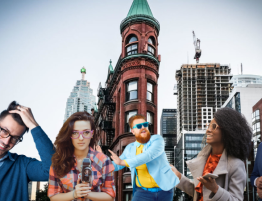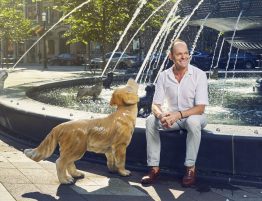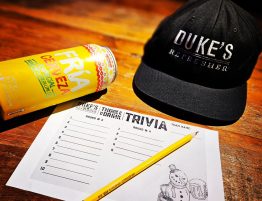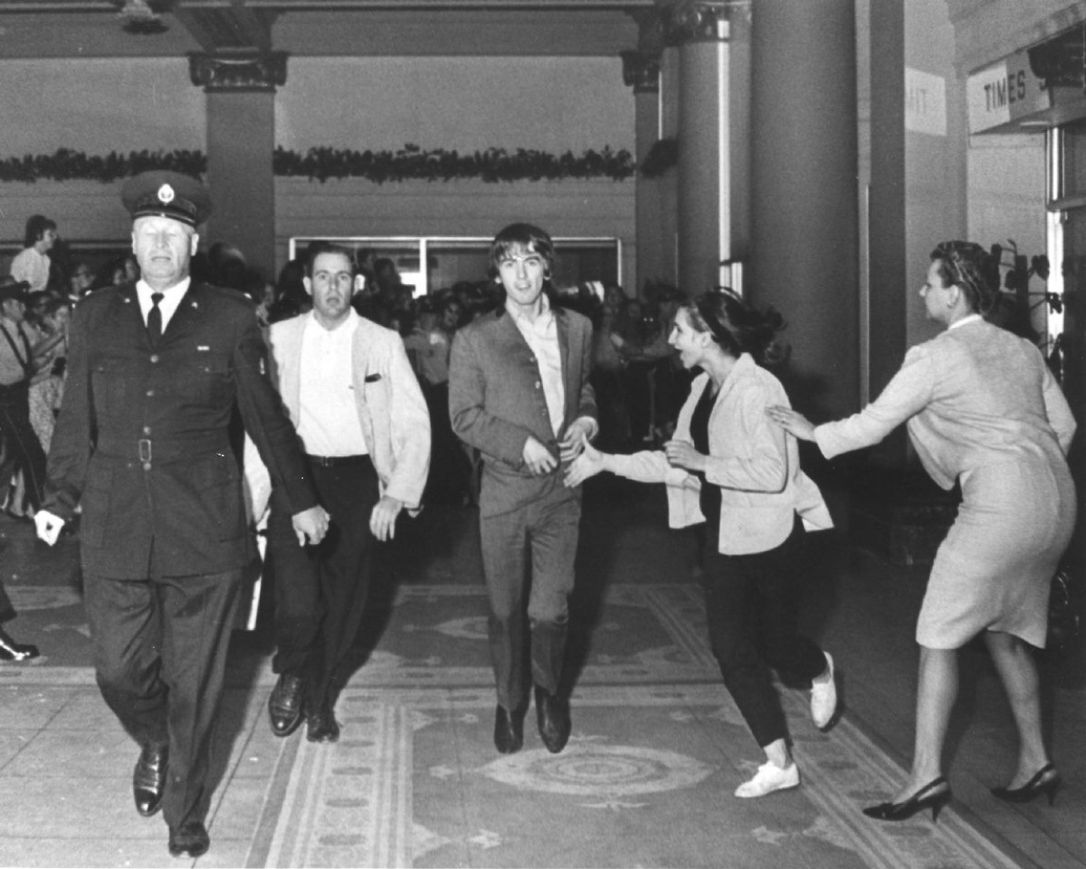
One of the many perks about being a district as old as we are is that we have some of the best stories about Toronto. From the South Market Building being the city’s first City Hall and police station to an actual hidden tunnel under Wellington Street, we have no shortage of stories where Old Town Toronto set the stage for some of the weirdest, funniest, and most important moments in our city’s history.
So with that, we’d be remiss if we didn’t talk about our musical history. Famous performances at St. Lawrence Hall, rabid fans descending on the Omni King Edward Hotel, Canadian music history being made, and Leonard Cohen writing a musical for…reasons. We’ve got it all right here!
The First Juno Awards
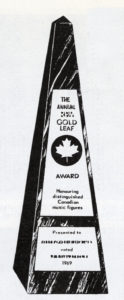
Talk about making Canadian music history! On February 23,1970 St. Lawrence Hall played host to the very first Juno Awards. Though at that point there were known as the Gold Leaf Awards.
Originally started by RPM Magazine, the Gold Leaf Awards began humbly as a reader survey “best of” special printed at the end of the year to celebrate some of Canada’s best musicians at the time. The 1970 ceremony was the magazine deciding to up its game.
Over 250 people showed up to the ceremony at St. Lawrence Hall, which was double the number of people actually invited. Winners received a specially carved walnut wood statue resembling a metronome. Some notable winners from the awards were Quebec’s brightest star Ginette Reno, folk music legend Gordon Lightfoot, and Winnipeg rockers The Guess Who.
Bad Times With Beatlemania at the King Edward
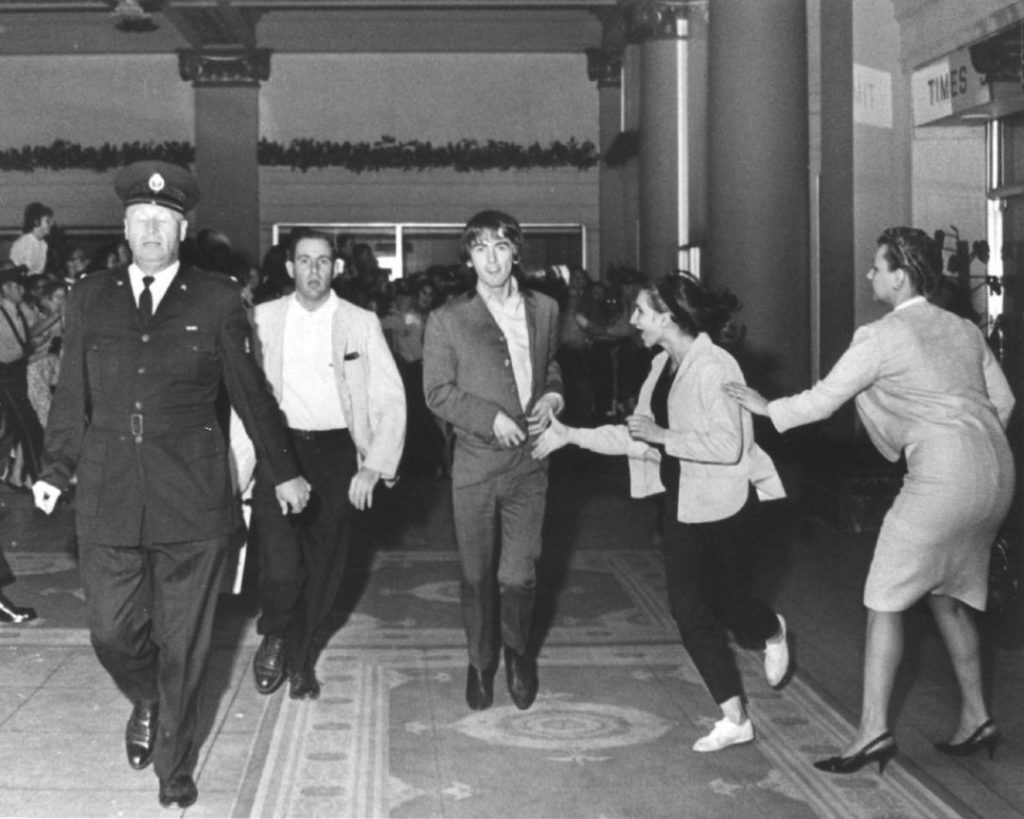
Since it’s opening in 1903 the Omni King Edward Hotel (known lovingly as the King Eddy throughout the years) was THE hotel for the world’s celebrities. Mark Twain, Louis Armstrong, Ernest Hemingway, Elvis Presley, and even Elizabeth Taylor were just some of the hotel’s notable guests. Of course, with celebrities come fans looking to catch a glimpse of stardom and grab an autograph. Under normal circumstances hotel staff were prepared to handle whatever happened.
However, the folks at the King Eddy couldn’t have prepared for what was to come when Beatlemania came to Toronto on September 7, 1964.
The mega-famous pop group’s ‘64 tour was their very first world tour, taking the lads from Liverpool to over 100 cities throughout the globe. To say that the reception was nuts is a bit of an understatement. We’ve all seen the videos of teenagers screaming and just losing it at the mere sight of the Fab Four and their appearance in Toronto was no different. The Beatles landed in Toronto, were accompanied to Maple Leaf Garden to perform, and then jammed on over to the King Edward’s Royal Suite for the night. In theory that was a simple enough plan, but the King Edward’s lobby was invaded by over 3,000 screaming hysterical teen fans who held their ground for 36 hours. The staff did their best to control the situation, but come on, that’s a HUGE crowd. It was so big that not even Toronto Mayor Phil Givens and his wife could get in to meet the group.
This wasn’t the King Eddy’s only brush with Beatles fame either. John Lennon would return to the Royal Suite in 1969 with Yoko Ono during their famous “Bed-Ins for Peace” tour to give a press conference before moving on to their week-long Montreal stay.
The Swedish Nightingale Sings at St. Lawrence Hall
Aside from being the city’s main public speaking hall, St. Lawrence Hall was also the main venue for musicians and performers coming to the city. And no performance was more famous than when the world-renowned Swedish soprano Jenny Lind came to town in 1851.
At the time Jenny Lind was incredibly famous throughout Europe, performing for royalty and concerts that were always sold out. Frédéric Chopin was among her many famous suitors and she was frequently regarded as a muse to many of history’s greats. Felix Mendelssohn composed arias with her voice in mind and Hans Christian Andersen’s story The Nightingale, about a bird whose song restores the health of a dying Emperor, was inspired by her. The latter even earned her the name as “The Swedish Nightingale”.
Sensing a money-making opportunity, American showman P.T. Barnum approached Lind for a North American tour, promising a fee of $1,000 a day plus expenses, totalling $187,500 (nearly six million dollars in today’s money) upfront. After securing the funds Barnum got to work and soon everyone was talking about The Swedish Nightingale landing in North America. She faced mobs of fans wherever she went.
So naturally when Lind was slated to perform at St. Lawrence Hall, the good people of Toronto were thrilled. A. & S. Nordheimer Co., a music store on King Street East, was the only place to buy tickets and they had to call the police to help control the crowds, showing that even then Torontonians loved lining up for things. Tickets were unusually pricey for the time at $3-4 each (About $500 today, roughly the cost of a Rolling Stones concert) and people happily paid.
The concert, naturally, was a complete success. Lind enchanted audiences with arias from Bellini’s “La Sonnambula” and Handel’s “Messiah” while closing with such hit “pop” songs like Robert Burns’ “John Anderson my Jo, John” and “Comin’ Thro’ the Rye”. Not only did the Lind concert mark an important moment in Toronto’s cultural growth, there are still signs of her success today, with an island in Nunavut named after her!

Leonard Cohen is a Hotel
One by one, the guests arrive
The guests are coming through
The open-hearted many
The broken-hearted few
So begins famed singer and poet Leonard Cohen’s “The Guests” from his 1979 album “Recent Songs”. Aside from being a hauntingly beautiful track that touches on Cohen’s spiritual ambivalence and the soul’s yearning for something more, it was also the inspiration for “I Am a Hotel”, a half-hour romantic musical made in 1983. The hotel in question? None other than the beautiful Omni King Edward.
Written by Cohen and television producer Mark Shekter, “I Am a Hotel” is essentially a narrative music video following the romantic yearnings and exploits of the hotel’s guests and staff. Cohen is of course in in it as a bystander and the film’s narrator, singing five songs from various points of his career for every scene (The Guests, Memories, The Gypsy’s Wife, Chelsea Hotel #2, and Suzanne). The cast had some stellar Canadian notables, including figure skating champion Toller Cranston as The Manager, founder of the National Ballet of Canada Celia Franca as The Diva.
It’s an interesting little artifact of where Leonard Cohen was at in the early 80s, but the real star of the show is the backdrop of the Omni King Edward! As always the breathtaking view of the lobby never fails to impress and getting a glimpse of some of the off-limits parts of the building is an absolute treat!




